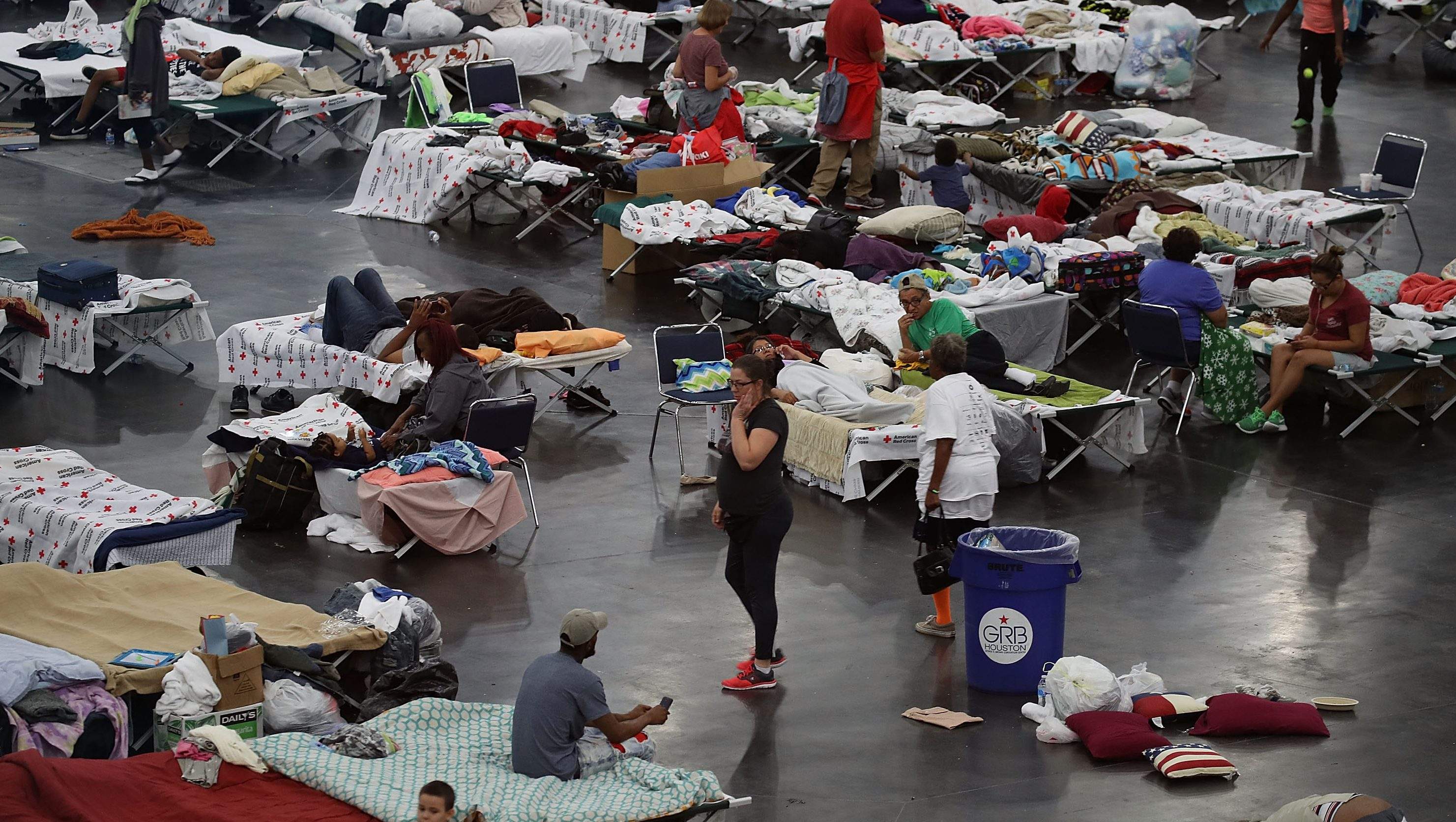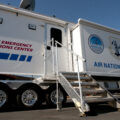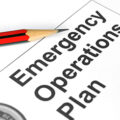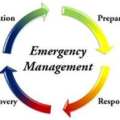
An emergency operations center (EOC) can be defined as a central command and control facility responsible for carrying out the principles of emergency preparedness and emergency management, or disaster management functions at a strategic level during an emergency, and ensuring the continuity of operation of a company, political subdivision or other organization.
An EOC is responsible for strategic direction and operational decisions and does not normally directly control field assets, instead leaving tactical decisions to lower commands. The common functions of EOCs is to collect, gather and analyze data; make decisions that protect life and property, maintain continuity of the organization, within the scope of applicable laws; and disseminate those decisions to all concerned agencies and individuals.
A public health emergency operations center (EOC) refers to a physical location or virtual space in which designated public health emergency management personnel assemble to coordinate operational information and resources for strategic management of public health events and emergencies.
History of Emergency Operations Centers
The first recorded emergency management relief package at the federal level happened in 1803 when Congress appropriated money to assist a New Hampshire town devastated by fire. It wasn’t until the beginning of the Cold War, however, that emergency relief and coordination began to play a key role in national security, public health, and disaster risk management. State and local agencies started to establish and coordinate defense and deployment infrastructure for emergency security situations.
In the 1960s, these roles expanded to include natural disasters. The following decade, five national agencies and departments created disaster management arms. The Oklahoma City bombing of 1995 brought domestic terrorism under the umbrella of state and local emergency direction. By the time 9/11 happened in 2001, disaster management had become an integral function of government at all levels.
The history of the Emergency Operations Center changed after the September 11 attacks, which saw many first responders taken down, heightening the public’s awareness of the need for complex emergency control systems. Now, many emergency teams focus more on disaster mitigation and preparedness than on response and recover. At all levels and in all functions, however, communication and coordination are key to successfully dealing with a public crisis. That’s why EOCs remain a critical component of an emergency management system.
Features Of Emergency Operation Plans
Life Support Requirements Sleeping Accommodations: some type of sleeping arrangements should be available to accommodate at least half of the EOC staff. Two or three-tier bunks can be used to conserve space. Sleeping bags and portable beddings should be readily available from a storage location near the EOC. Resting facilities should be located in a quiet location.
Food Service: facilities should be provided to feed staff for at least a 14-day period. Avoid sugar-laden and fat-filled foods such as hot dogs, hamburgers, candy bars, donuts, and pastries. Sugar can cause irritability, hyperactivity, and depression. Fats cannot provide the fuel that emergency personnel need to handle intense activity levels. More suitable foods include plain granola bars, fresh and dried fruits, milk, hard cheeses, whole-grain breads, crackers, and fresh vegetables. Avoid overuse of caffeine and sugar-laden beverages; alcoholic beverages should not be available.
Water: arrangements for water should be in place. If faucet water becomes undrinkable, bottled water and/or water sanitation tablets should be available. A minimum of 10 gallons of water per day, per person should be provided for the EOC occupants, plus an additional quantity to satisfy mechanical and other requirements for water. Water must also be available for showers, waste disposal systems, firefighting equipment, etc.
Sanitary Facilities: facilities such as toilets, showers, laundry, and garbage disposal should be provided. These should be located away from the operations area. Supplies such as toilet paper should be readily available to meet the demand caused by having more people using the facilities.
Medical Supplies: medical supplies should be limited to those required for a dispensary type operation. First aid kits and an extra supply of bandages and antiseptics should be priority items, as well as medicines to treat diarrhea, headaches, constipation, and some respiratory problems.
Heating, Ventilation, And Air Conditioning(HVAC): facilities should be comfortable at all times. Ensure that procedures are in place to compensate for failed HVAC conditioning systems. Battery-operated backup equipment should be available.
Review Existing Standards Related to Life Support Systems. There may be some Federally, State and locally defined standards for life support systems. You should check with your records and documents office for up-to-date information on these standards to ensure that you’re incompliance. Standards help ensure that entities maintain a minimally acceptable level of performance and operations for life support systems.
How Emergency Operations Center Works
Emergency personnel are trained in Incident Command and their roles and responsibilities. The EOC utilizes ICS as the command-and-control structure. Within this structure, the EOC is organized into five sections to manage operations. These EOC sections include:
Management: Under the guidance of the EOC coordinator, this section has overall responsibility for the management and direction of all EOC activities including development, implementation and review of strategic decisions. Management directly coordinates with the EPG and ensures its strategic direction is implemented in EOC operations.
Operations: This section represents on-scene emergency responders and provides coordination between the EOC and field operations, including the ICP.
Planning and Intelligence: This section is responsible for receiving, evaluating and analyzing all disaster information and providing updated status reports to EOC management and field operations. The planning and intelligence section is also responsible for damage assessment and developing specialized technical assessments of events.
Logistics: Logistics is responsible for procuring supplies, personnel and material support necessary to conduct emergency responses (e.g. personnel call-out, equipment acquisition, lodging, transportation, food, etc.).
Finance and Administration Section: The section handles cost accountability, purchase authorizations, documentation and risk assessment.
In order to manage the roles and responsibilities of each section, each EOC Section comprises specific functions called units and branches and is overseen by EOC section chiefs, who report directly to the EOC coordinator or the campus emergency director. Depending on the scope of an incident, some or all functions of a section may be activated.
The EOC Team
The EOC Team members are personnel who staff the EOC during emergency response operations. The makeup of the EOC Team may depend on the specific incident and. In some cases the EOC Team will be pre-identified, while in other cases, potential EOC Team members will be requested to serve in the EOC.
Multiple staff members may be identified to fill the same position so EOC Team members can rotate during prolonged incidents.
Importance of Communication In Emergency Operations Center
Prior to an emergency, it’s critical to identify someone within your organization or community who will be able to act in a Public Information Officer (PIO) role. This function serves as the coordination point for all public information, media relations and internal information sources during an emergency response and recovery.
When acting in a public information role, it’s critical to consider and remain in contact with your primary audiences:
- Media: Radio, TV, newspaper, online.
- The public: Those who are directly impacted and those in the community who may not be directly impacted at this time and well as people in surrounding areas.
- Stakeholders: Partner organizations, people within your organization, etc. It’s important to provide these groups with clear, concise, timely information on what’s happening. This will help build trust and maintain order and calm in the community. It will also allow you to direct people on what to do, including preparing their properties or preparing for evacuation, if necessary. ALSO READ: Important Features Of Emergency Operation Plans





